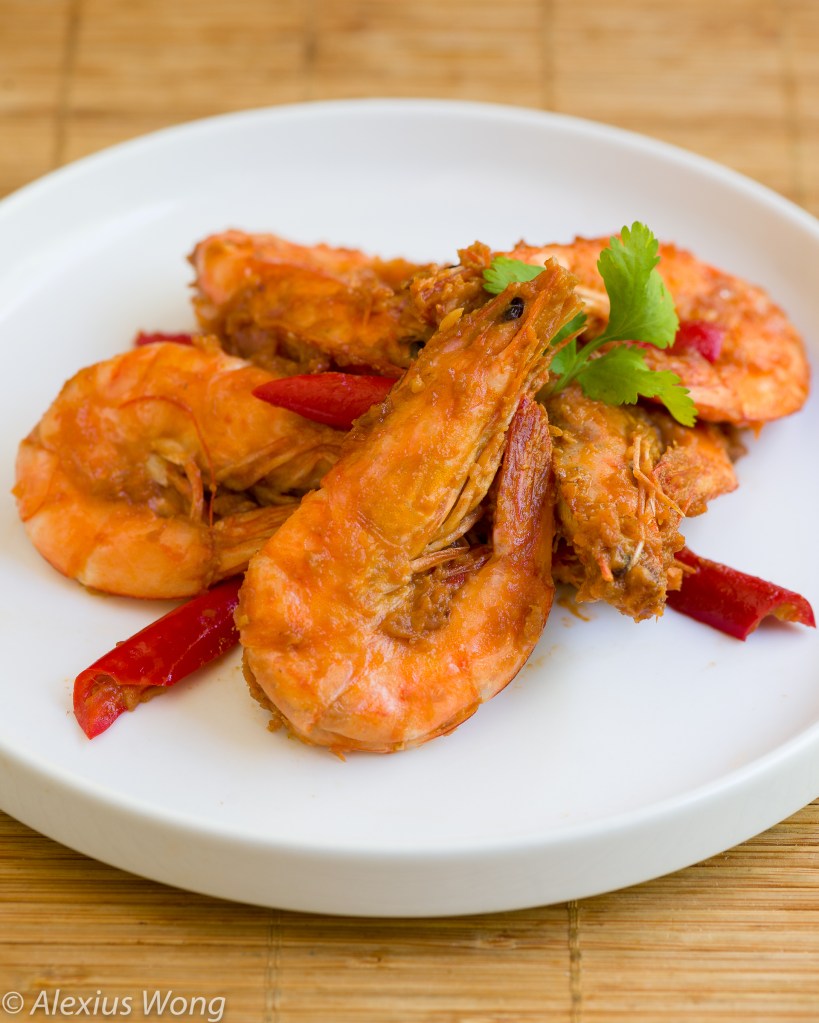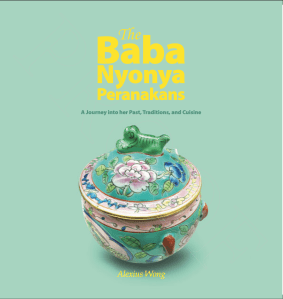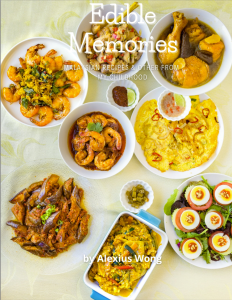
In this recipe, we see the Peranakan’s penchant for using a strong flavor element with a mild ingredient – tamarind. The use of this acidic and slightly sweet fruit perhaps harkens back to its introduction by the Tamils who controlled the Straits of Melaka in the 11th century. This application is not only found in this shrimp dish but also in another made with pork belly.
The basic Nyonya version of this dish is very simple, comprising of only shrimp and tamarind paste as the main ingredients. However, this version is a “supped up” recipe that I learned from Tri Suherni, who worked as my parents’ cook for many years. Here, she brings her Javanese background with the addition of garlic, shallots, chilies, and whole peppercorns into the whole flavor profile.
The shells are kept on the seafood for two purposes. First is to keep the shrimp moist during the cooking, and second, to act as a canvas for the tamarind sauce to hold on to. The deveining process allows the tamarind to permeate the flesh during marination.
The best way to really enjoy this dish is the following. Holding the shrimp by its tail, bite the head off, and savor the sauce while you bite down to release the slightly bitter head juices. After removing the shell from the mouth, bite off a chunk, savor the sauce as you manipulate the shell off the flesh – the deveining facilitates this easy removal. Scoop a spoonful of rice into the mouth and chew the mixture together. After completely working on a shrimp, don’t forget to lick the remaining sauce on the fingers. There is no finer way to enjoy it, which, to me, is totally delightful for this gourmand.
Recipe from Edible Memories e-cookbook
Serves 4
Marination time: 1 to 2 hours
Preparation and cooking time: 15 minutes
500 grams (1 lb) medium-large to large shrimp, unpeeled and deveined
2 tablespoon unseeded tamarind pulp, mixed well with ½ cup room-temperature water and strained
5 whole white peppercorns
2 cloves garlic, peeled and chopped roughly
5 small/50 grams shallots, peeled and chopped roughly
4 tablespoons vegetable oil
2 red chili peppers, stemmed, seeded, and cut into half lengthwise and into 1-inch pieces
Salt
Sugar
If shrimps are not deveined, follow these steps:
Holding the shrimp in one hand, hold a small serrated knife on other hand, and start at the top of the first shell after the head. Cut into the shell and into the flesh all the way until before the last segment before the tail, deep enough to expose the vein – do not go deeper than the vein. Remove the vein and dip it with the fingers in a bowl of water to release it.
Snip off the end of the shrimp nose and the antennae with a pair of scissors or a knife. Add the shrimp to a large bowl, and drain the shrimp very well of water. Add the tamarind paste, and mix well. Marinate for 1 to 2 hours in the refrigerator.
When the marinated shrimps are ready:
In a food processor, add the peppercorns and crush into fine bits but not into a fine powder. Add the garlic and shallots, and process into a fine paste. Remove and reserve.
In a pan on medium-high heat, add the oil. Add the processed mixture and fry for 2 minutes until aromatic. Add the marinated shrimp and tamarind mixture, and add ½ teaspoon sugar and ½ teaspoon salt, or to taste. Cook each side of shrimp for 2 minutes only. Add the chilies and stir for 2 minutes until the sauce is completely dry. Serve immediately.


The hardcopy and e-book of The Baba Nyonya Peranakans book (1st image) and Edible Memories e-cookbook (2nd image) are available – more information on the Homepage.

One of my favourite dishes especially eaten with nasi lemak.
Michael KL Wong
LikeLike
I love shrimp. Sounds yummy!
LikeLike